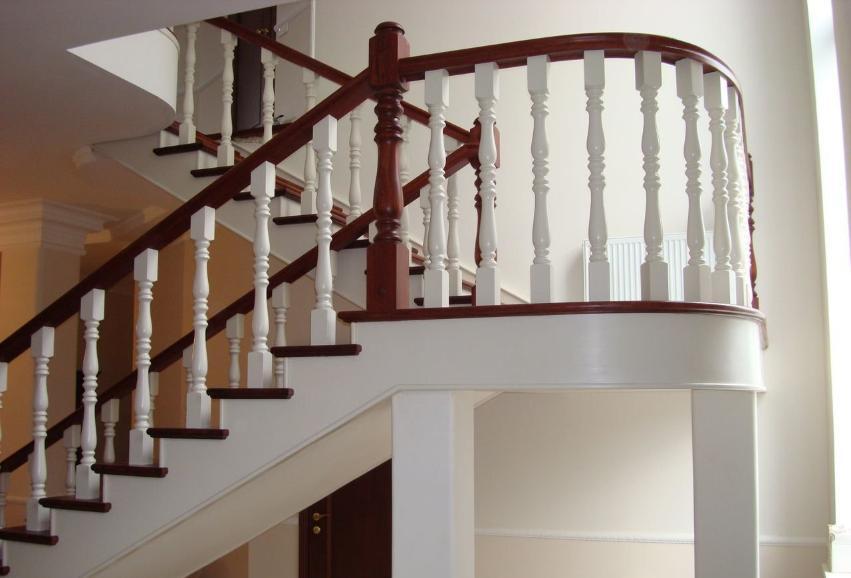
Creating Flow: How Stair Design Connects Your Home
- 6734
- 6

Ascending Aesthetics: Crafting Harmonious Home Journeys 🏡✨
Stairs are far more than mere connectors between levels; they are fundamental elements that shape our experience of a home. From ancient structures to contemporary dwellings, stairs have evolved, transitioning from purely utilitarian features to significant architectural statements. Early designs focused on practical access, yet even then, their presence dictated pathways and the perception of height and space. Understanding this evolution is key to appreciating their profound impact on modern living environments.
Historically, stair design mirrored prevailing architectural styles and societal values. Grand, sweeping staircases in stately homes spoke of prestige and ceremony, while more modest, enclosed versions served functional purposes in simpler abodes. The materials used – from solid stone to intricate wood carvings – consistently reflected craftsmanship and available resources. This rich tapestry of design history underscores how stairs have always been integral to a building's character, subtly guiding inhabitants and visitors through its narrative.
Beyond their physical presence, stairs possess a remarkable psychological influence. They create a sense of anticipation as one ascends, revealing new vistas and spatial configurations with each step. Conversely, descending can evoke feelings of grounding or a gentle return. This intrinsic ability to choreograph movement and alter perspective makes stairs a powerful tool in interior architecture, capable of defining mood, enhancing privacy, or fostering openness within a residence.
The concept of 'flow' in home design refers to the seamless, intuitive movement through a space, where transitions feel natural and unforced. Stairs are undeniably at the heart of achieving this fluidity. They act as visual and physical anchors, linking distinct zones – perhaps a vibrant living area with a tranquil sleeping quarter. A well-designed staircase doesn't just transport; it contributes to the overall rhythm and harmony of a home, making every journey within it an integral part of the living experience.
Insights from Architectural Discourse 📚
- The strategic placement of a staircase profoundly influences a home's spatial perception, dictating natural circulation paths and visual connections between areas.
- Material selection and thoughtful illumination of stairways are crucial for shaping the emotional atmosphere and enhancing the user's sensory experience within the space.
- Ergonomic considerations, such as optimal riser height and tread depth, are paramount not only for safety but also for ensuring comfortable and effortless movement.
Interpreting Design Dynamics 🎨
The decision to feature a central staircase or to tuck it away can dramatically alter a home's character. A prominent, open staircase often serves as a focal point, drawing the eye and establishing an immediate connection between levels, ideal for open-plan layouts. Conversely, a discreetly placed stair can preserve the integrity of separate zones, maintaining a sense of privacy and intimacy. The visual weight and scale of the design are critical in these considerations.
A recurring discussion in design circles revolves around the balance between a stair's functional necessity and its potential as a sculptural art piece. While some advocate for minimalist designs that prioritize utility, others champion stairs that boldly express architectural creativity. The most compelling designs often achieve a harmonious blend, where form enhances function, transforming a simple ascent into an engaging visual and tactile experience.
Lighting plays an extraordinary role in elevating stair design. Natural light streaming through a nearby window can cast dynamic shadows, highlighting the contours and materials of the staircase throughout the day. Artificial lighting, strategically placed, can emphasize architectural details, improve safety, and create a warm, inviting glow. Thoughtful illumination can truly transform a stair from a mundane passage into a captivating feature, especially during evening hours.
Different stair configurations evoke distinct feelings and suit various architectural styles. Straight runs offer a sense of grandeur and directness, while L-shaped or U-shaped stairs provide a more gentle transition and can integrate landings as small pause points. Spiral stairs, though space-efficient, often convey a sense of drama and intimacy. Each type contributes uniquely to the overall spatial narrative, requiring careful consideration of the home's aesthetic and practical needs.
The journey along a staircase is as important as the destination. Landings, often overlooked, provide crucial moments for pause, reflection, or a change in direction, enhancing the sense of flow. These transitional spaces can be utilized for small design elements, a piece of art, or even a window with a view, making the ascent or descent a more enriching experience. Seamless transitions are key to a truly connected home.
Modern innovations continue to redefine stair design. Floating treads create an airy, contemporary aesthetic, while transparent materials like glass foster openness and allow light to permeate. Integrated storage solutions within staircases offer clever functionality, especially in compact homes. Companies like Brickettakad are at the forefront of exploring these innovative approaches, crafting designs that are both beautiful and inherently practical, pushing the boundaries of what a staircase can be within a home.
Key Takeaways for Home Harmony 🗝️
- Strategic stair design significantly enhances a home's perceived spaciousness and contributes to its overall aesthetic coherence, making every level feel connected.
- Careful selection of materials and thoughtful lighting for stairways are essential for cultivating desired atmospheres and ensuring a safe, pleasant user experience.
- Integrating stair design early in the home planning process allows for optimal spatial flow, resulting in a truly cohesive and intuitively navigable living environment.








Kanyaphak Inthanak
This article really makes me think differently about my own home's staircase. I never considered it beyond its basic function. The idea of 'flow' is particularly insightful!